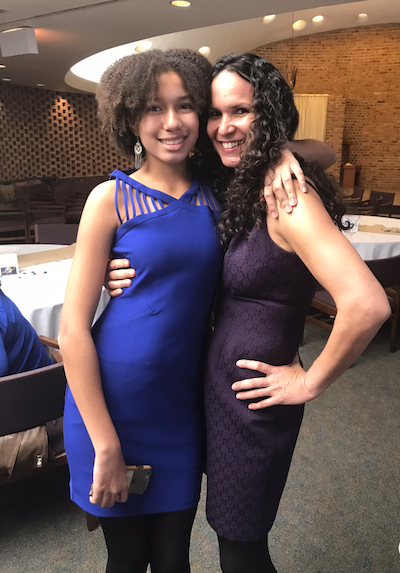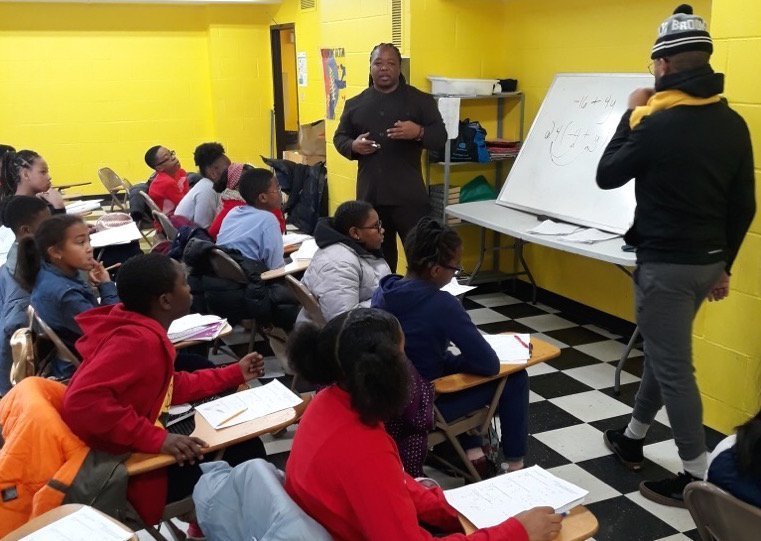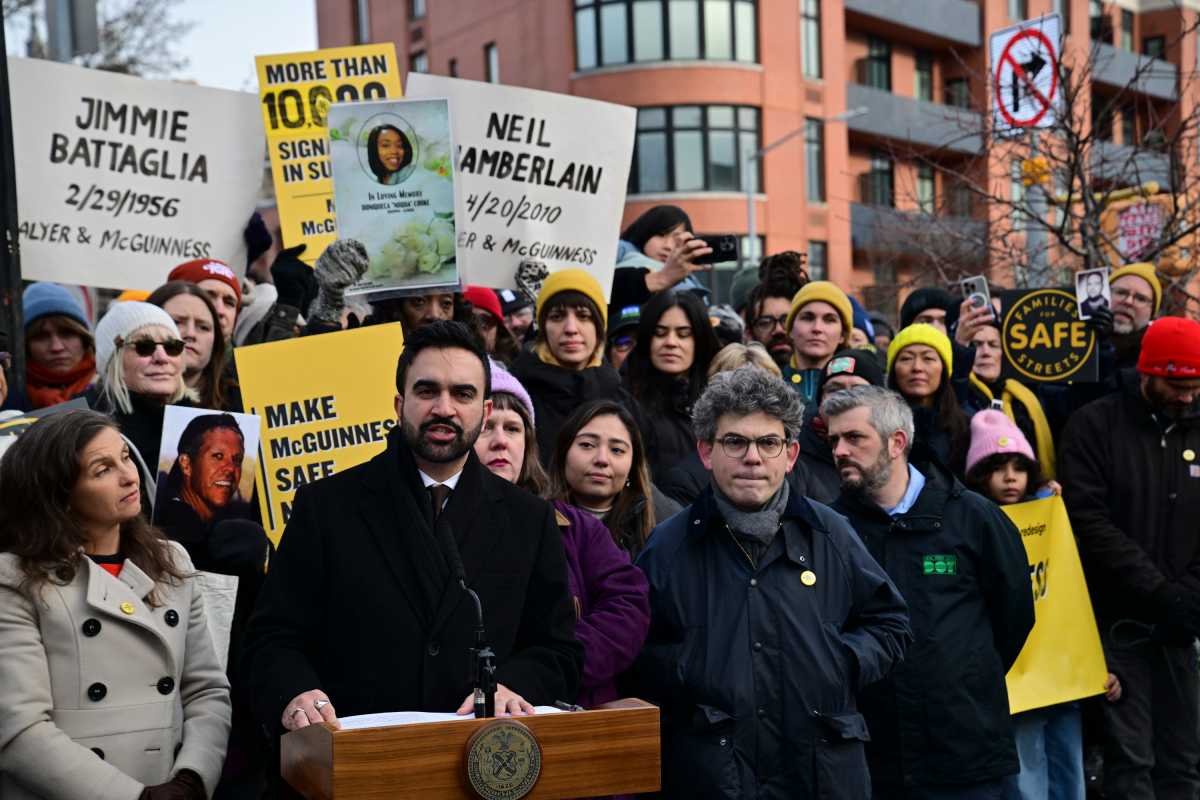As Mayor Bill de Blasio pushes to kill the Specialized High School Admissions Test (SHSAT), the single determinant of those who get access to these sought after public schools, two Bedford-Stuyvesant programs, Creative Acheivment Success Prep (CAS) and Navigate the Maze to Achievement (NTMA) show 33% and 27% of their students respectively have been offered seats at specialized high schools, putting the citywide acceptance rate of 4% to shame.
The success of these programs comes as heated arguments rage about the abysmal rate of black students accepted to New York City’s specialized high schools. Official data reveal that of the 4,800 New York City students who took the SHSAT and were offered seats at specialized high schools, only 190 of them were black.
“After seeing the numbers year after year, I had to figure out how to help. I wanted to provide students with programs in their neighborhood,” said Sam Adewumi, a Brooklyn Tech alumnus and Founder of CAS Prep. “We have to do a better job of teaching in elementary school. How we develop potential is not being addressed.”
Allison Bonner-Shillingford, Founder of NTMA, like Adewumi feels the Mayor’s proposal to skim students from the top 3% – 7% of middle schools citywide will set some students up for failure because not all schools have the same level of academic rigor, or supportive school environment,
“Not all schools are created equal. Our culture depends on the DOE,” said Bonner-Shillingford, referring to the black community. “We can’t depend on them, they are failing and we have to supplement what they are doing.”
NTMA requires its’ students identify as black, while CAS Prep was created to serve the black community, though Adewumi says he will not turn a child away.
Bonner-Shillingford throws her full support behind using the SHSAT as the sole criteria for specialized high school admission. Pointing to programs like the New York City Department of Education’s DREAM Program which provides prep classes as well as her own, Bonner Shillingford added, “One of the poorest populations in our city are Asians and they are finding the resources. We are not looking,” she said passionately.
In fact, a report issued by the Asian American Federation shows the number of Asians living in poverty grew by 44% between 2000 and 2016.
One of Adewumi’s students was accepted to Stuyvesant High School, however opted for Brooklyn Technical High School (BTHS) where 16% of students are black and hispanic, compared with Stuyvesant where 4% of students and black and hispanic. At Stuyvesant 66% of students are Asian and 22% are white; while 44% of students at BTHS are Asian; and 31% are white.

Gabrielle Cayo, a 13 year-old, black student who currently attends St. Ann’s School, a prestigious independent school in Brooklyn Heights, was also accepted to, and will be attending BTHS. She toured a number of schools including Stuyvesant and cited an extreme lack of diversity, especially at Stuyvesant.
“There weren’t enough students to form a [Black Students Union], so they merged with Latino students,” said Gabrielle. “I knew that wasn’t the space for me.” Gabrielle says if she didn’t go to BTHS she would have felt like she remained at St. Ann’s, a mostly white school.
“It’s a rigorous process, you can’t just show up to take the test,” said Gabrielle, who had one-on-one tutoring beginning in the 6th grade. She also attended CAS Prep, and admitted the test was nerve-wracking, “You have to prepare.”
Although one of a small number of black students in the classroom taking the test, Gabrielle felt she saw a “solid number of students of color” gathered in the auditorium.
Gabrielle’s mother, Tanya Van Court is a graduate of Stanford University with two engineering degrees, her father is a graduate of Cornell University. They had the resources to begin preparing Gabrielle early. Van Court says the test is about socio-economics and the failure to provide resources to families, “[The test] is about what parents can give. I know people who pay $500 an hour for test prep, and they may or may not be able to afford it. We were fortunate that we could afford prep,” she says.
Van Court also believes the test and the swirling debate exposes the failure to consider the potential and resilience of children. She calls it disgusting.
“The predominant education conversation is about grit, it doesn’t take into consideration the child from Canarsie traveling to the Upper East Side for private school daily doing homework on the train. The test doesn’t measure the trials of these children putting up with microagressions. The test doesn’t measure that the grit and work ethic these kids demonstrate is unparalleled and unmatched by kids who don’t have to do what these kids do because they live nearby and have the resources.
“The predominant culture is talking about grit. We’re not taking into consideration the grit of our kids who are fighting against all odds to travel an hour, and have to get to a school setting where everyone is different to them,” she says of black children accepted to and attending rigorous private schools.
“You can’t tell me kids who are bright and have grit can’t succeed. They need to be bolstered and supported with tutoring and training. When you combine their drive and grit with support I can guarantee these kids will be successful,” said Van Court.
Referring to the various plans floating around to change admissions criteria to specialized high schools she says, “I think the best plans go awry if we are not thoughtful about how we make a change. The elimination of the Gifted and Talented programs is a good example. When these programs were removed because people said they were opposed to tracking, the kids with talent lost that opportunity and were no longer getting the prep they needed.”
Both Adewumi and Bonner-Shillingford believe the elimination of gifted and talented classes in schools cheated children of the opportunities and resources they would have otherwise had at their finger tips.
Bonner-Shillingford’s frustration is heightened because as she reaches out to school administrators and parents to recruit children she finds rejection in excuses ranging from the fear of children traveling far from home, to schools not wanting to lose their brightest, most talented students to other schools.
NTMA has seen steady success since it opened in 2016. In that first year 15 children took the test 26% were accepted to specialized high schools; in 2017, 20 children took the test with 35% being accepted to specialized high schools; this year, of the 20 students who took the test 35% got into specialized high schools, 20% will enter one of the City’s top 20 high schools in the City; and 20% will enter schools ranked in the top 50 high schools.
CAS Prep opened its doors in 2013 and has had acceptances to specialized high schools for all but its first year. Adewumi’s program took an unexpected turn because too many of the children hoping to attend prep classes barely met proficiency, and as such didn’t have the skills to begin classes. Today he oversees an expanded program where tutoring begins in 1st grade. To date the program has served some 400 children.
“We have to do a better job in elementary school,” said Adewumi, a high school teacher. “We are not developing talents of our children, and we still have to get to social and emotional development, and culture.
Adewumi’s CAS Prep provided SHSAT preparatory classes for 30 students who attended public, charter, parochial and independent schools. It is also the provider of the educational/prep component of NTMA. Children participating in both programs spend a chunk of their Saturdays at class.
Both founders of NTMA and CAS Prep believe it is important to provide more than test prep. They believe children need exposure, and to be taught critical thinking. More importantly, they stress support for children to succeed. The programs’ expansion are likely a commentary on the need and increasing awareness. Success rates of these programs demonstrate the abilities of children given the right support and resources.
CAS Prep has expanded to Ocean Hill-Brownsville, and another location will open in Flatbush this summer. Classes cost $660 for 20 weeks, while individual tutoring sessions cost under $50.
NTMA which began in Bedford-Stuyvesant also has a program in Crown Heights. Bonner-Shillingford asks for a $500 donation that covers enrichment in the form of college visits, a volunteer program and mentors educated at specialized high schools, a six-week summer program and additional resources and support that follow children from 7th to 12th grade.










